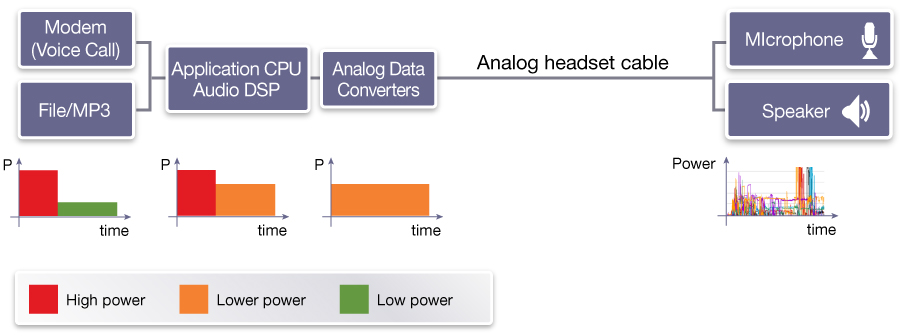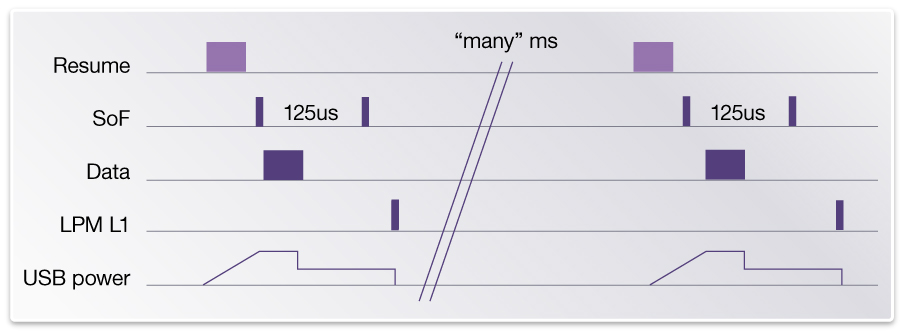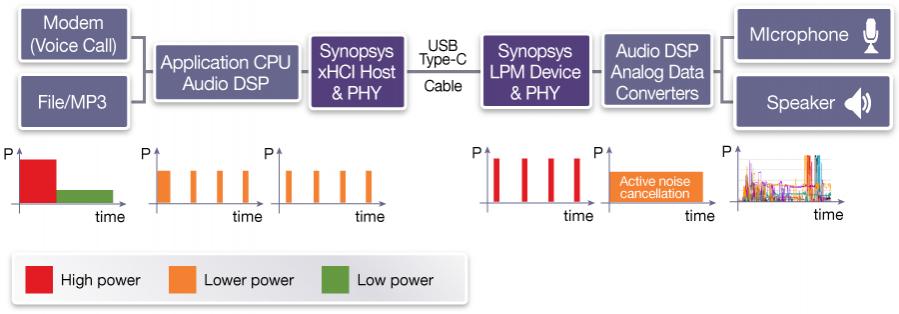You have certainly experienced that modern mobile phones are used for more than phone calls and do not have room for multiple connectors. A new approach for audio connectivity is needed, allowing product designers to retire the 3.5mm jack. Considering the USB audio protocol to replace the analog audio solutions, typically using a 3.5mm phone jack, seems to be the obvious solution, but the legacy USB audio cannot replace the 3.5mm phone jack in mobile phones and other portable, battery powered products, as it would drain the battery too quickly.
The modern solution was announced on September 27, 2016 by the USB-IF, it’s the USB Audio Design Class (ADC) 3.0…

ADC 3.0 is expected to be the new standard for phones using the USB Type-C[SUP]TM[/SUP] connector, because, unlike legacy USB audio protocols, ADC 3.0 implementations is enabling significant system power savings, which are critical to low-power mobile applications.
Before describing how ADC 3.0 implementation enable power savings, let’s take a look at the power profiles for mobile phone with analog headset. For analog audio solutions, the communication between the source and the user is burst based, allowing functional blocks to enter lower power modes between bursts of activity. It’s a pretty efficient solution in term of power consumption, but it’s using the 3.5mm phone jack and the goal is to remove it.

Unlike analog headsets, USB audio headsets use isochronous transfers. Isochronous transfers provide the guaranteed bandwidth which is required for audio streams, but at the cost of a higher power consumption. To strongly reduce this power consumption, the USB ADC 3.0 is smartly using the new power state Link Power Management (LPM L1) for High Speed USB.
Isochronous transfers for legacy USB audio occurs every 1ms for Full Speed USB. The bus is idle between transfers, but cannot enter Suspend L2. The combination of High Speed USB bursting and LPM L1 Suspend offers significant power savings opportunities. The next figure shows the power saving events of the new audio specification as a function of time.

Integrating the USB 2.0 LPM L1 specifications seems to be a good option to reduce the power consumption in such a way that USB ADC 3.0 could replace analog audio solution, and the USB Type-C connector replace the 3.5 mm jack. But a proof of concept was required to allow the ADC 3.0 specification to progress. Synopsys has demonstrated the successful proof of concept using Synopsys DesignWare® USB IP.
I suggest you to read this articlewritten by Morten Christiansen, Technical Marketing Manager, Synopsys, and I recommend you spend some time on the Figure 4: “Proof of concept for LPM L1 power save”. You will go deep inside the packet based USB protocol and understand how LPM L1 really works. In this system used for the proof of concept, the LPM L1 Suspend residency is 87.8% (3.513ms of a 4ms service interval).
The author reminds that PHY power consumption is important to consider alone, as it is typically much higher than controller power consumption. LPM L1 power is typically less than 1% of active or idle power and using LPM L1 can result in PHY power savings of 86%. And the conclusion is that USB Audio Device Class 3.0 USB headset solutions that are power-competitive with legacy analog headset solutions.

To implement ADC 3.0 in low-power products like phones, tablets or laptops, designers will need an ADC 3.0 compliant host controller with Hardware Controlled Link Power Management capability. The ADC 3.0 compliant device controller implementation will require some important changes and designs supporting ADC 3.0 require LPM L1 capable PHYs. Synopsys is claiming that lead customers are already designing ADC 3.0 compliant headsets using industry leading LPM-capable USB IP.
As an end user, we should have the opportunity to buy smartphones equipped with a single connector in the near future. USB Type-C specification allowing to support Power Delivery, Authentication, Audio (ADC 3.0) is expected to see large adoption as 2 billion+ units are forecasted by IHS to ship in 2019, or 40% of total units.
The article from Synopsys about USB Type-C ADC 3.0:
https://www.synopsys.com/designware-ip/newsletters/technical-bulletin/usb-audio-dwtb-q117.html
By Eric Esteve from IPnest







Comments
0 Replies to “When Will we Replace the 3.5 mm Jack in Modern Phones?”
You must register or log in to view/post comments.